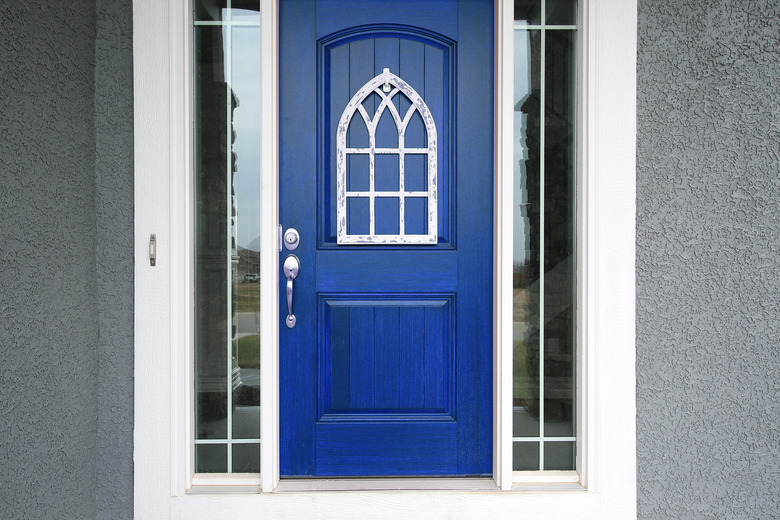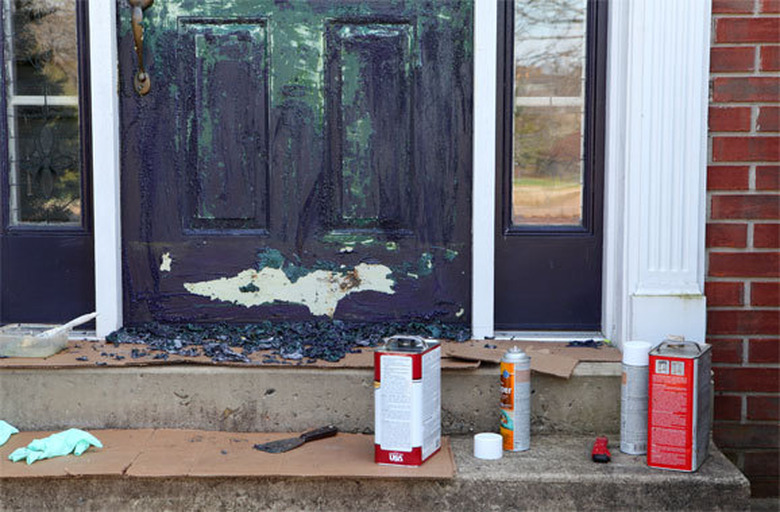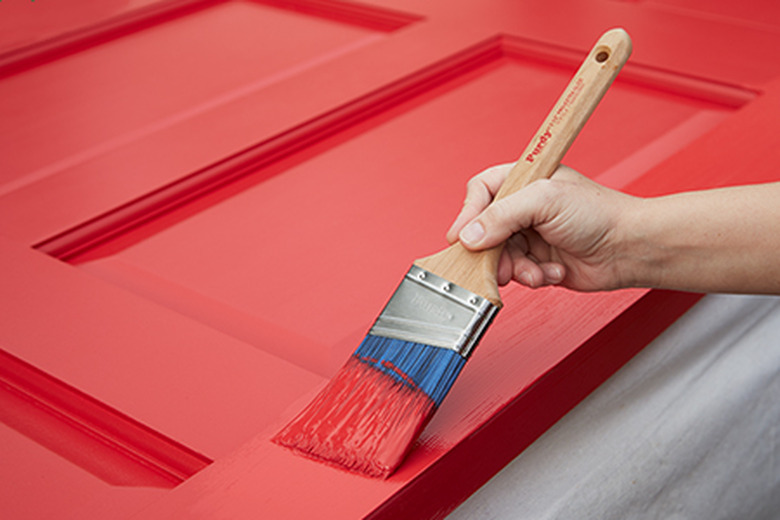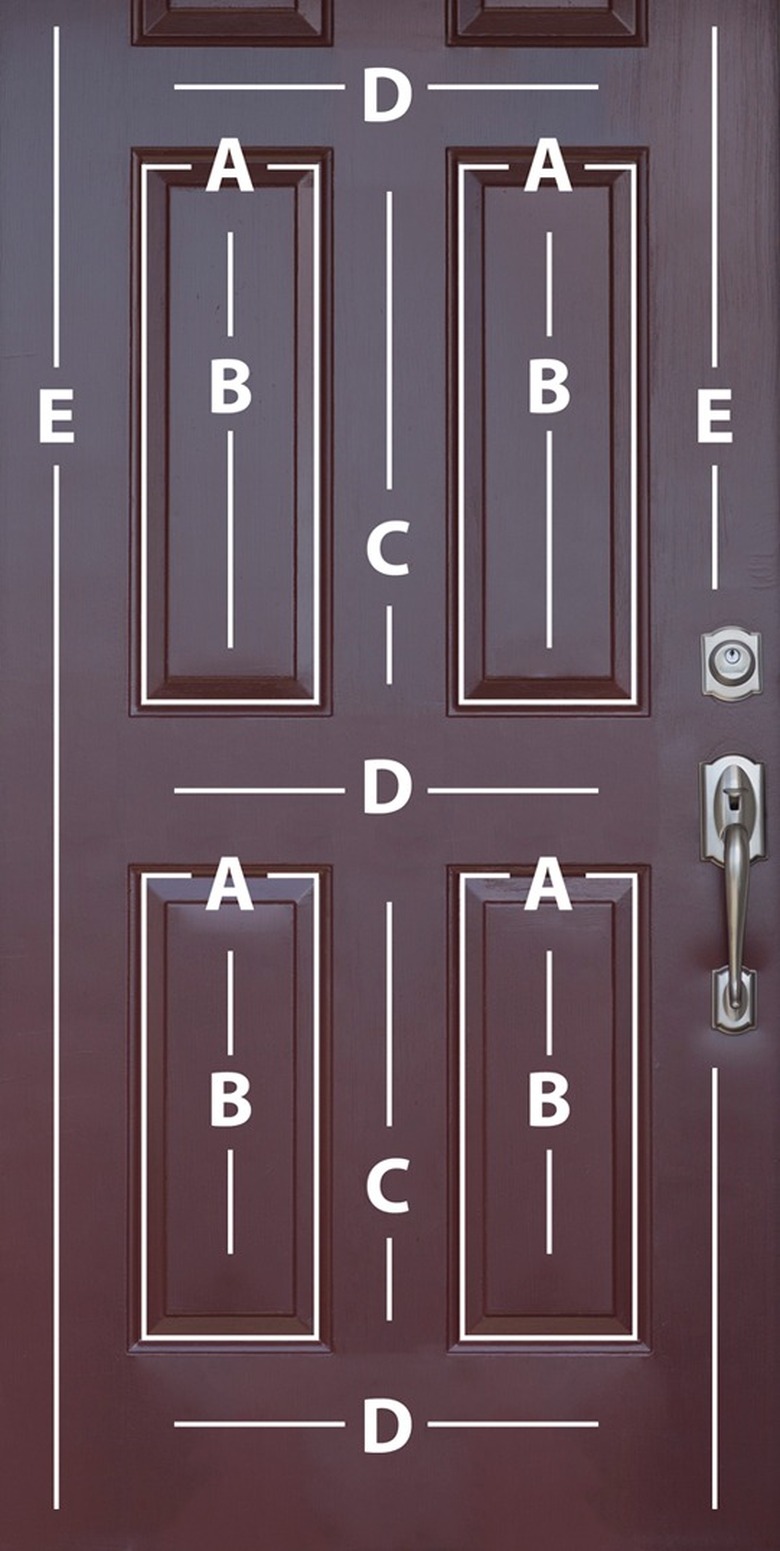How To Paint A Front Door
The front door is one of the most visible features on your house, if not the most visible. It's the first thing visitors see as they approach and, in feng shui terminology, it's the passage through which _chi—_or energy—enters your living space. Choosing an attractive, appropriate color for your door and keeping the door in good condition are important design and maintenance tasks for any harmony-loving homeowner.
Tip
If you're interested in incorporating feng shui into your exterior home design, consider the direction the door faces when choosing the color. Each direction is associated with an element and a pallet of corresponding hues.
It's up to you how often you paint your door, but the recommended average is every 3 to 7 years, depending on the door material and the amount of exposure. Steel and fiberglass doors weather better than wood ones and don't need paint as often, but all bets are off if the door receives direct sunlight for more than an hour every day or is repeatedly exposed to moisture or grime-laden hands.
Whether you paint your door as part of routine maintenance or because design considerations call for a color change, you'll get the best results if you can take the door down and paint it on sawhorses. That isn't always possible, though, and it isn't a requirement. You can get great results by painting the door in place. Just be sure to paint in good weather and to adjust your schedule to optimize paint drying conditions.
Preparing to Paint Your Front Door
Preparing to Paint Your Front Door
If your door is in good shape, and you're just adding a refresher coat of paint, you can probably apply it directly over the old finish. You'll want to clean the door first. Use a detergent solution with a little added bleach or vinegar to take care of grease and mold that can prevent adhesion. If the door is extremely dirty, moldy or extra shiny, upgrade to trisodium phosphate (TSP), a strong cleaner and de-glosser available at any hardware store. Wear gloves when cleaning with TSP.
If you're painting a new wood door or a wood, steel or fiberglass door that has flaking finish and damage, such as cracks or rust, you'll want to put extra energy into prep. This part of the project can make or break the final results, so budget enough time to do complete the following procedure.
Things Needed
-
Screwdriver
-
Paint scraper
-
Wire brush
-
Paint stripper
-
Epoxy wood filler or auto body filler
-
Rust treatment
-
Pad sander
-
100- and 120-grit sandpaper
-
Masking tape
- Remove the knob, deadbolt, bottom sweep and any other metal trim that you don't want to paint. You can do all this with a screwdriver.
- Remove all flaking paint with a paint scraper. Use a wire brush to get old paint out of crevices you can't reach with the scraper.
- Strip old finish using chemicals, if necessary. You don't always have to do this, but you should if the old paint will create a texture that can be visible under the new finish.
- Fill cracks in wood doors with epoxy filler and give the filler time to set. You can also use this filler to repair dents and voids in fiberglass doors. Auto body filler is a good substitute. It's as durable as epoxy wood filler, and you won't see it under a coat of paint.
- Dissolve rust on steel doors with a rust remover. If the rust has eaten holes, you can fill them with auto body filler.
- Sand wood doors with a pad sander and 100- or 120-grit sandpaper. Pay special attention to any areas you repaired with filler. Fiberglass and steel doors don't need as much sanding, but it's still a good idea to scuff them down by hand with 120-grit paper.
- Mask off the hinges and glass with masking tape.
All this is easier to do if you can take the door down and lay it on sawhorses. If you choose to do this, the door may be off its hinges for a day or two, so plan to cover the door opening with plastic or a sheet of plywood. If you leave the door in place, be sure to cover the floor with newspaper or a drop cloth for the entire prep and paint procedure.
Door Painting Tips
Door Painting Tips
Choose the application method. You can paint a door with a brush, roller or spray gun. The best choice depends on the quality of finish you're after, the type of door, and whether or not you are able to take it down. A spray gun gives the best finish, but it's an impractical choice when you can't take the door down and it's still hanging in your living room. A brush is always practical, but a roller is faster for the outside frames of a paneled door or the entire surface of a slab door.
Sectionalize paneled doors. When painting a paneled door with a brush and roller, pros recommend doing it in sections. The five sections of a typical frame-and-panel door are
- (A) the inside edges of the panels
- (B) the panels themselves
- (C) the vertical frames between the panels
- (D) the upper, middle and lower horizontal frames
- (E) the vertical frames on the edges of the door
Paint the door in order from A to E, using a brush to cut-in the insides of the panels (A) and a brush or 3-inch roller to do the rest. Always brush or roll in the same direction as the wood grain. If the door is steel, the best strategy is stroke horizontally on section D and vertically on all the rest.
Prime before you paint. Applying primer is an extra step you might be tempted to skip. That's almost always a bad idea. Primer is a must when painting over bare wood, metal or fiberglass, and because it improves paint adhesion, it's a benefit even when applied to an existing finish. Use a high-solids shellac- or water-based product. A single coat is all you need.
Paint in good weather. Moisture and cold temperatures lengthen drying time and increase the risk of drips and dust ruining your work. Paint manufacturers generally specify 50 degrees Fahrenheit as the minimum temperature for application. A temperature around 75 or 80 degrees is ideal, but remember that excessive sunlight makes paint shrink and crack. Unless you can move the door to your garage or some other controlled environment, the best time paint it is in the early morning or late evening on a dry, warm day.



